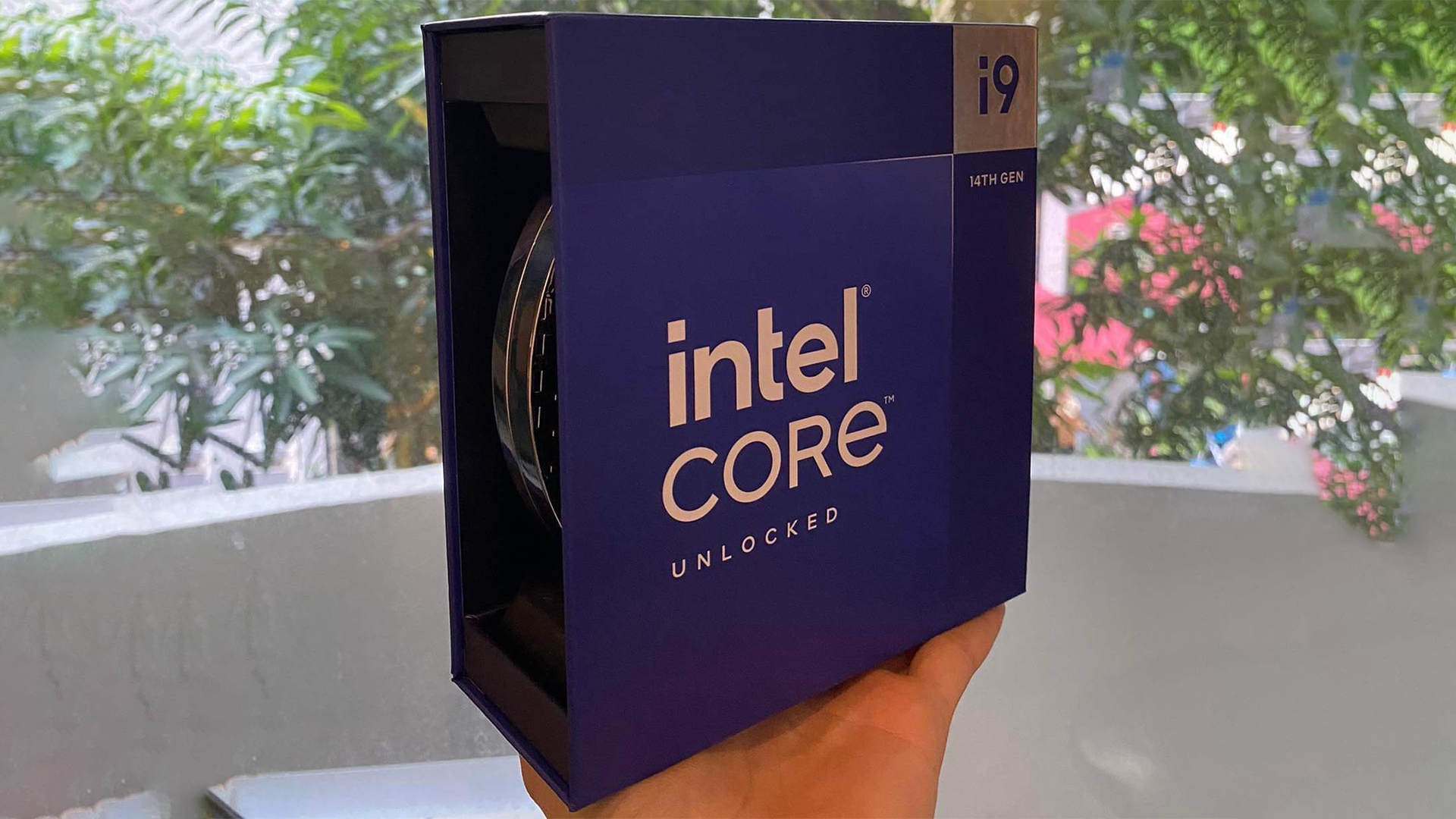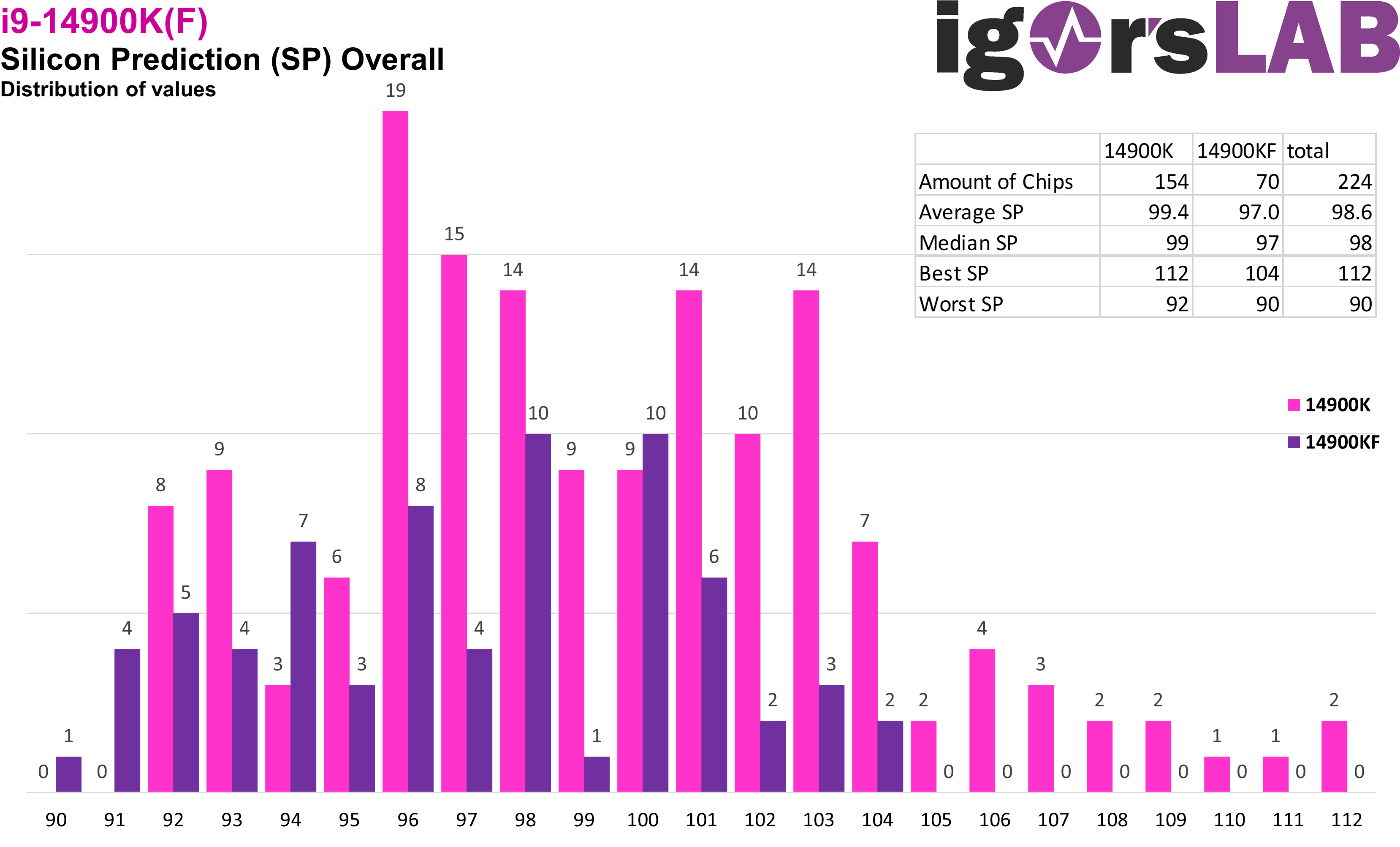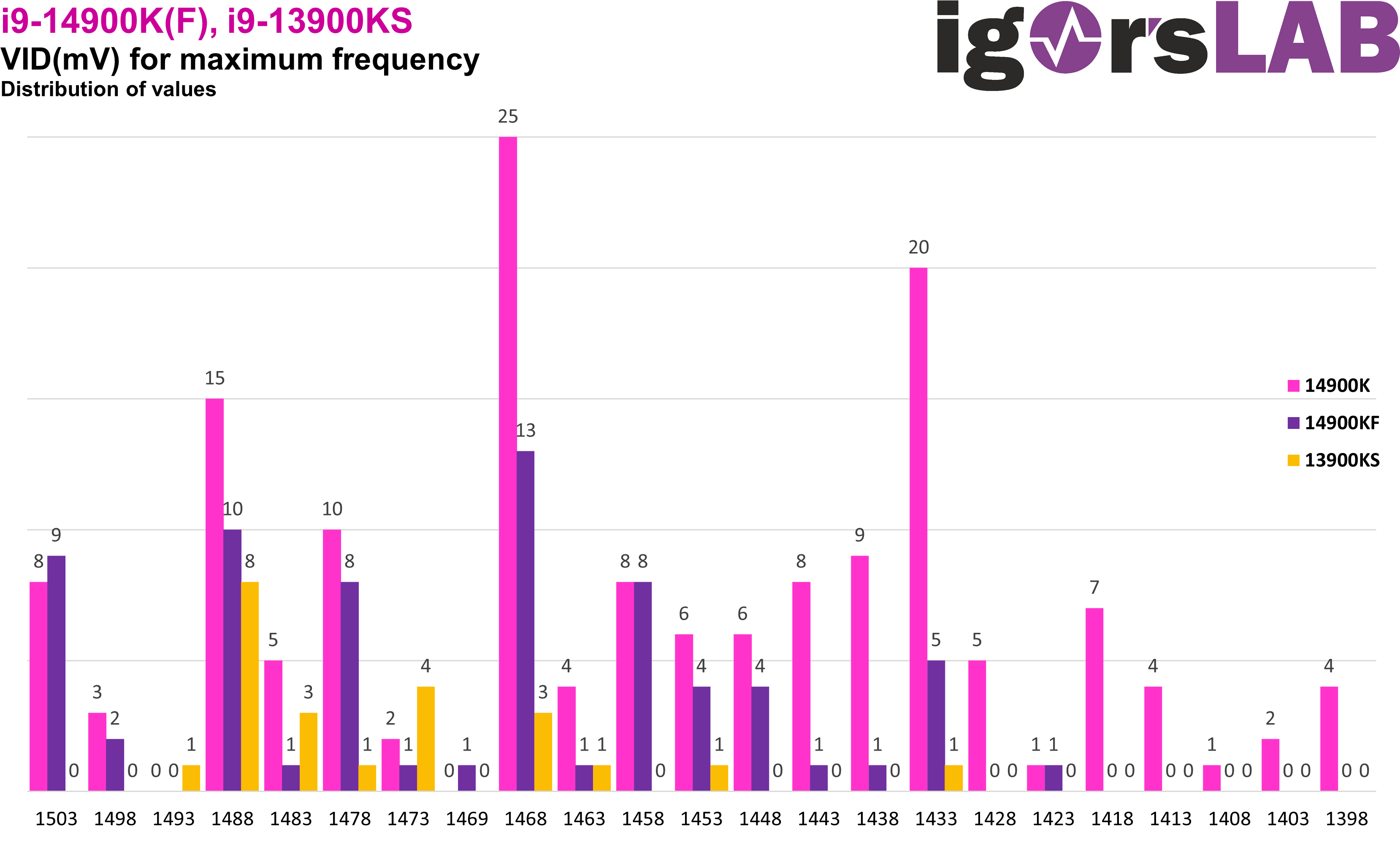
Igor's Lab recently put 600 Raptor Lake Refresh CPUs in a head-to-head comparison test to see how silicon quality varied. Chips tested included the 14900K/KF, 14700K/KF, and the 14600K/KF. Igor's Lab also tested these chips against Intel's 13th Gen counterparts, such as the 13900KS, to see how Intel's newer chips behave in terms of silicon quality compared to Intel's older Raptor Lake CPUs.
Igor's Lab utilized an Asus Maximus Z790 Hero to conduct all the tests. One of the features built into Asus' latest Z790 Hero is a silicon prediction metric that can test the silicon quality of any Intel CPU that's put into it. Asus' silicon prediction feature works by checking the maximum VID a CPU requests, which varies depending on the silicon quality of each chip. A higher VID represents an inferior chip, while a lower VID represents a better-binned CPU.

Igor's Lab found that its batch of 14900Ks saw some samples performing better than the 14900KF results. Based on a silicon range of 90 to 112 points (higher is better), the batch of 14900KFs ranged between 90 and 104 points, while the batch of 14900Ks ranged between 92 and 112.
Only a few of the 14900Ks had a silicon prediction level greater than 104, however, with most of the chips landing between 96 and 103. Most of the 14900KF chips were between 94 and 100. Based on this data alone, overclockers are potentially better off buying a standard 14900K, since they're likely to be better overclocking chips. This is the opposite of what Igor's Lab found with the 13900K and 13900KF several months ago.
Igor's Lab also looked into the silicon prediction quality of the P cores and E cores separately but found the results to be similar to the general results above. The E cores were more consistent, with only a couple of 14900Ks having better E core silicon quality than the 14900KFs.
13900KS vs 14900K/KF

Igor's Lab also tested Intel's older 13900KS Raptor Lake CPU vs the 14900K/KF for variations in silicon quality. This time Igor's Lab tested the chips using maximum VID value, not Asus' silicon prediction scale. Unsurprisingly, the 14900K results had several samples that outperformed the 13900KS by 30mv. The batch of 14900Ks also had substantially more samples that matched the best 13900KS result.
It is worth noting that Igor's Lab's batch of 13900KS chips for this test was only from this year — and there were only 24 samples. By contrast, there were 224 14900K and KF SKUs (of the 600 Raptor Lake Refresh CPUs) that were tested.
2022 13900K, KFs and KS' Are Better Binned
One interesting test Igor's Lab conducted was a direct, head-to-head silicon quality comparison between two batches of 13900KS chips: one from 2022 and the other from 2023. The test found a noticeable difference in quality between the two batches — the 2022 batch had more samples that achieved greater silicon quality than the 2023 batch. On average, Igor's Lab recorded a 108.1 average SP for the 2022 models and a 106.4 average SP for the 2023 models.
Igor's Lab also saw similar behavior in its 13900K/KF results for the 2022 versus 2023 batches. The results in this case were far closer together, however, with most of the chips from both batches featuring an SP value of 97. But the average SP values were different, with the 2022 batch sightly worse (98.6 average SP) than the 2023 batch (100.2 average SP).
Raptor Lake Refresh Is Better Binned Vs Raptor Lake
Overall, Igor's Lab's testing suggest that Intel's latest Raptor Lake Refresh CPUs are better-binned compared to Intel's 13th Gen Raptor Lake chips. This is not surprising, since Intel is utilizing an enhanced process node in Raptor Lake Refresh to push clocks higher (and thus, better silicon quality). On top of this, 13th Gen Raptor Lake silicon quality appears to have gotten worse over the past year — giving the Raptor Lake Refresh an even bigger advantage.
As a result, users can generally expect 14th Gen processors to have slightly more overclocking headroom compared to their 13th Gen predecessors.
That said, Igor's Lab's testing shouldn't be taken as fact, especially since there was a very small pool of CPU samples. Although 600 chips might sound like a lot, you'd need thousands (or tens of thousands) of samples to get truly accurate silicon quality statistics — and silicon quality variance between SKUs is generally pretty small, anyway. But for more details, including the 14700K/KF and 14600K/KF results, check out Igor's Lab's article here.
"chips" - Google News
November 10, 2023 at 01:37AM
https://ift.tt/BMJ1DUb
600 Raptor Lake Refresh Chips Binned, 14900K Beats 13900KS - Tom's Hardware
"chips" - Google News
https://ift.tt/nQZhKjd
https://ift.tt/1Iswvn3
Bagikan Berita Ini















0 Response to "600 Raptor Lake Refresh Chips Binned, 14900K Beats 13900KS - Tom's Hardware"
Post a Comment